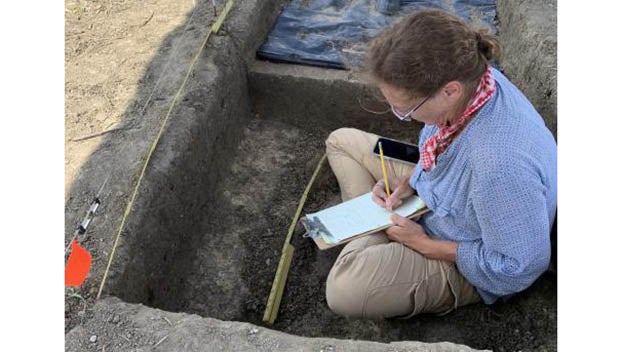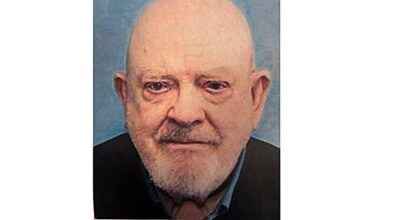Alabama researchers closing in on site of pivotal battle that changed course of Southern history
Published 5:57 am Sunday, November 21, 2021

- University of West Alabama
For a century, researchers have searched for the spot where Hernando de Soto’s Spanish explorers clashed with Chief Tascalusa’s warriors in a devastating battle that changed the course of Southern history.
Spanish survivors wrote about the Battle of Mabila in documents that survived the doomed expedition. But historians and archaeologists never found the exact location of the confrontation that killed hundreds of Spaniards and thousands of Native Americans.
Now archaeologist Ashley Dumas, a professor at University of West Alabama, has announced discoveries of Spanish and Native American artifacts at several sites in Marengo County, which sits between Montgomery and the Mississippi border. The newly-identified settlements are now believed to be the province of Mabila.
While the exact site of the battle still hasn’t been located, Dumas said the findings suggest it probably happened within a few miles of the territory identified by her team.
“This has been a really fascinating puzzle to try to solve using multiple lines of evidence and multiple types of expertise,” Dumas said.
The Battle of Mabila played a key role shaping Southern culture, Dumas said. De Soto led hundreds of men on an expedition throughout the region in search of treasure and land for colonization. At Mabila, they lost their treasure and supplies and encountered fierce resistance from Native warriors that turned them north into more inhospitable terrain. The few who survived the journey eventually made their way into Mexico with nothing to show for their efforts.
“It was a dramatic event and it marked a major turning point in European settlement of the southeast,” Dumas said. “The Battle of Mabila is the reason why we’re not speaking Spanish in the southeast today.”
The Battle of Mabila was the Gettysburg of its time, said Jim Knight, a retired anthropology professor at the University of Alabama. Generations of historians and archaeologists have hunted for the battle site, described as a fortified city.
Over time, two camps formed. One believed Mabila was in southwest Alabama. The other placed the site in central Alabama. Steven Meredith is an archaeologist who joined the search for Mabila in 2019.
“It’s hard to be an archaeologist in Alabama without having some opinion on the topic,” Meredith said.
To find it, researchers started with accounts of the expedition in four chronicles that survived the journey. They tried to identify geographic locations where pivotal events occurred. Charles Hudson, a historian and anthropologist in Georgia, created a map of de Soto’s route that remains widely accepted, Dumas said.
Archaeologists used that information, which could be vague and contradictory, for decades to search sites with no luck. Several federal and state commissions dating back to the 1930s sent research teams to central and south Alabama, only to have them return empty-handed.
In 2005, Knight helped organize a new panel of experts to take a fresh look at the evidence. The panel consisted of a broad range of historians, archaeologists, geographers, geologists and folklorists. None had strong ties to the two camps that had staked their claims on locations in south or central Alabama.
The group had to address a key question that seemed to take south Alabama out of the mix: How many miles could the group cover each day?
“A big mistake people had made was deciding that expectation could go 25 to 26 miles a day considering they had a herd of pigs and burden bearers who were chained together at the neck,” Knight said.
The new group estimated the expedition could cover about 12 miles a day and focused on areas in river valleys that had traditionally been settled by Mississippian tribes. Knight and other researchers examined three potential sites where Native American artifacts had been found but struck out.
Knight said he had nearly given up when a geographer friend in North Carolina urged him to make one final push. Instead of looking at river valleys, the new search turned toward the prairies of the Black Belt.
Her team included many other researchers, including Charles Cobb, an expert in Spanish metals at the Florida Museum of Natural History, and Tony Boudreaux, an archaeologist at Mississippi State University who specializes in contact between Native Americans and early explorers. Volunteers and students also assisted with the surveys.
Dumas and her husband began by scanning plowed fields. The soil in that part of the Black Belt is difficult to search and privately-owned pine plantations cover much of the land. In the fields, they found pottery shards.
Then they discovered pieces of metal that dated back to the time of Spanish exploration.
“I’ve never gotten chill bumps and had tears come to my eyes like I did when we found that first unquestionable piece of 16th century metal,” Dumas said. “And then we found more and more and more. And we’re up to 52 confirmed pieces.”
Researchers are still looking for the exact battle site, a fortified town that burned after the clash. Chief Tascalusa’s forces lost the battle but extracted heavy casualties from the Spanish. In Spanish chronicles, Tascalusa was described as a giant and eventually his name would be used for the city of Tuscaloosa. The discovery of the settlements believed to be the Chiefdom of Tascalusa have led to new understandings of Native American culture during the time of de Soto’s expedition.
“We are now certain that we have the province of Mabila,” Dumas said.
Meredith said the discovery could help develop knowledge about life in 16th century Alabama, when the first explorers caused great disruption in Native American society. The settlement at Mabila probably only lasted a couple of generations and represented a time of great transition.
“If there ever was a dramatic period of time for Alabama, the 16th century was one of them,” Meredith said, “It was such a time of tremendous change.”
Dumas said private landowners in Marengo County have played a key role in helping her team make its discoveries. Sometimes fears that surveys could disrupt farming and business have made it difficult to search for artifacts, she said. Her team has been careful about working with owners and protecting the exact locations of key sites. Researchers will also work with Native American tribes on efforts to repatriate certain artifacts.
The exact location of the Battle of Mabila could be within reach. Or it could be lost to time, covered in pine trees or hidden by development. If the search continues, archaeologists will continue to learn more about Native cultures before and after de Soto.
“Even if we don’t get that original point, and perhaps it is a great big catfish pond, we do have a better picture of society of that time,” Meredith said.




